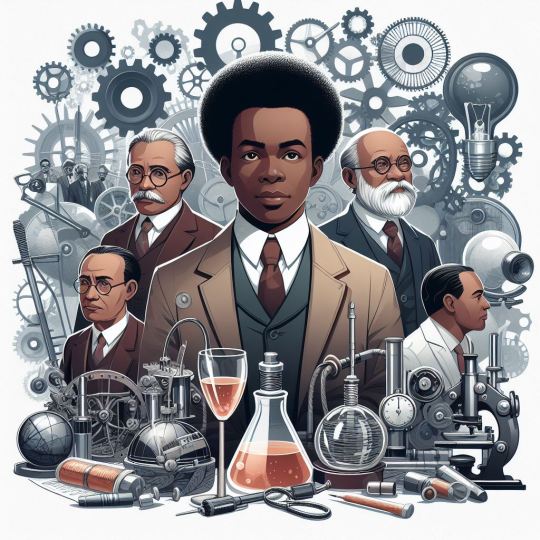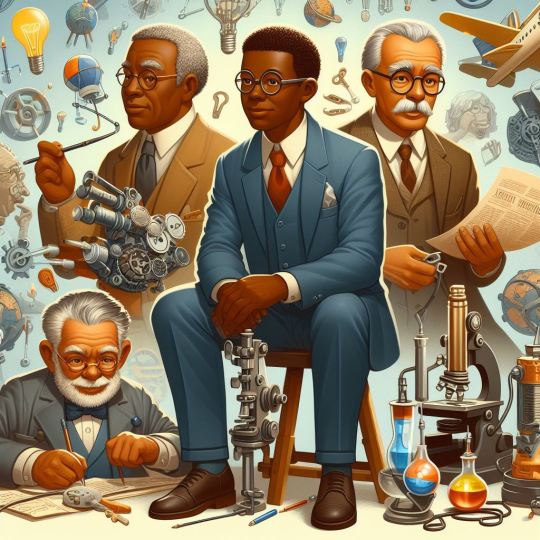#lead management system for real estate
Explore tagged Tumblr posts
Text

Efficient Communication Flow
RSoft CRM systems transform communication practices within real estate enterprises by furnishing tools that guarantee consistent and efficient interactions with clients.
#Real Estate CRM Software#real estate lead management#crm software for real estate agents#real estate lead management system#lead management software for real estate#lead management system for real estate#best crm for lead management#best real estate crm for single agent#best crm lead management software#sales lead crm
0 notes
Text
Benefits of lead management software for real estate Company.

In the lead management software for real estate sector, data collection is essential. Real estate professionals may make confident and well-informed decisions about some of the most crucial areas of their work, such as purchases, sales, or property development when they have access to the relevant data. Robust data offers valuable insights into market patterns. Businesses can get a competitive edge with quality data. Read more
1 note
·
View note
Text

Boost Your Sales with a Powerful Lead Manager System
Struggling to manage leads efficiently? Mint360 offers a comprehensive lead manager system designed to help businesses organize, track, and convert leads with ease. Streamline your lead management process, improve follow-ups, and increase your conversion rates with this powerful tool. Perfect for businesses looking to scale and enhance their sales efforts.
#lead manager system#mint360#best lead management software for real estate#real estate crm lead management#crm lead management software#lead management system software
0 notes
Text
Revolutionize Your Lead Management Journey: Ignite Success with These 5 Game-Changing Tools
In the ever-evolving world of business, mastering the art of lead management is the key to perpetual growth and triumph. To surge ahead, companies must not only adapt but also embrace cutting-edge tools that amplify their customer relationships and email marketing endeavors. In this article, we embark on a journey to uncover the heart of triumphant lead management, unveiling five indispensable tools that have the power to metamorphose your approach.
Best Email Marketing Tools: Unleashing Potential
Welcome to the realm of Mailchimp, where the magic of a user-friendly interface meets the might of robust analytics. Tailor your messages, orchestrate automated campaigns, and harness insightful data for an ongoing symphony of strategic refinement. Mailchimp is not just a tool; it's your companion in the quest for email marketing excellence.
Cutting-Edge CRM Tools: Nurturing Connections
In the tapestry of CRM solutions, Salesforce stands tall as a pioneer. It's not just about managing leads; it's about forging meaningful relationships. Salesforce empowers businesses to track leads efficiently, communicate with a personalized touch, and make decisions rooted in data. Embrace Salesforce, and watch your CRM processes evolve into the catalyst for unparalleled growth.
Lead Management System Optimization: Embrace the Holistic Journey
Step into the dynamic world of Leadqart, where CRM seamlessly dances with marketing automation. Let lead scoring be your guide, automated workflows your companions, and detailed analytics your storyteller. Dive deep into understanding your audience, and let your tailored approach skyrocket engagement and conversion rates. HubSpot isn't just a tool; it's your ticket to lead management utopia.
Best-in-Class Marketing Automation: Unveil the Potential
Behold ActiveCampaign, a fusion of automation prowess and a user-friendly interface. Here, the creation of targeted campaigns becomes an art form. From personalized emails to automations mirroring lead behavior, this tool empowers you to be the maestro of engagement at every stage of the buyer's journey. ActiveCampaign isn't just a tool; it's your symphony of marketing automation.
Advanced Analytics Tools: Illuminate the Path Ahead
In the intricate maze of lead management, let Google Analytics be your guiding light. Data isn't just numbers; it's your compass in the dynamic landscape. Unveil unparalleled insights into user behavior, track campaign performance, unravel visitor demographics, and refine your strategy in real-time. Google Analytics isn't just a tool; it's your oracle for data-driven decision-making.
Conclusion: Elevating Your Lead Management Symphony
As businesses waltz through the complexities of lead management, integrating these five essential tools becomes a game-changer. Elevate your email marketing, let CRM processes become your growth engine, embark on a holistic lead management journey, wield the power of marketing automation, and illuminate your path with advanced analytics. In doing so, you're not just managing leads; you're orchestrating a symphony of sustained growth and success in an increasingly competitive landscape. It's not just about tools; it's about forging a legacy of triumph and excellence.
#lead management system#customer relationship management tools#best email marketing tools#best crm management software#crm software for real estate
0 notes
Text
Pick a Card: Career Guidance




Top Left to Right--> Pile 1, Pile 2
Bottom Left to Right--> Pile 3. Pile 4
If You Liked This Reading Sign up to TheObsidianPages777 Newsletter
+Free E-Guides on New Moon Manifestation and Gem Stone for Life Path
================================================================================================
Pile 1
Current Situation: The Chariot
You are determined and focused on your career goals, moving forward with purpose and direction. There's a sense of control and determination driving your actions.
Challenges: Five of Wands
You may be facing competition or conflict in your workplace. There could be differing opinions and struggles that make it hard to progress smoothly.
Advice: Strength
Rely on your inner strength and patience to navigate through challenges. Maintain self-control and approach conflicts with compassion and understanding. Your resilience will lead you to success.
Ideal Careers:
Leadership Roles: Positions such as a manager, director, or CEO, where determination and leadership are crucial.
Entrepreneur: Running your own business where you can harness your drive and overcome competition.
Project Management: Roles that require strong organizational skills and the ability to navigate conflicts and challenges.
Military or Law Enforcement: Careers that require discipline, determination, and the ability to handle conflict and stress.
Athletics or Coaching: Where physical and mental strength, as well as resilience, are important.
================================================================================================
Pile 2
Current Situation: The Hierophant
Your career path is currently influenced by traditional structures and conventional methods. You may be working within an established system or organization.
Challenges: Seven of Cups
There may be confusion or too many options available, making it difficult to choose the right path. Avoid getting lost in illusions or wishful thinking.
Advice: The Hermit
Take time for introspection and seek inner guidance. Reflect on your true goals and values before making decisions. Solitude and self-reflection will provide clarity.
Ideal Careers:
Education: Teacher, professor, or academic advisor, where traditional knowledge and guidance are valued.
Religious or Spiritual Leader: Priest, minister, or spiritual counselor, providing guidance within established belief systems.
Legal Profession: Lawyer, judge, or paralegal, working within the structures of the legal system.
Research and Academia: Careers that involve deep study and reflection, such as a researcher or academic.
Counseling or Therapy: Roles that require introspection and helping others find clarity, such as a therapist or counselor.
================================================================================================
Pile 3
Current Situation: Ace of Pentacles
A new opportunity or beginning in your career is emerging. This could be a job offer, a new project, or a chance to start something new with strong potential for growth.
Challenges: The Devil
Be wary of falling into negative patterns or becoming too attached to material success. Avoid temptations that could lead to unethical behavior or burnout.
Advice: Page of Swords
Approach new opportunities with curiosity and a willingness to learn. Stay vigilant and gather information before making decisions. Be clear and honest in your communication.
Ideal Careers:
Finance: Banker, financial advisor, or investment analyst, where new opportunities for growth are abundant.
Real Estate: Real estate agent or property manager, involving new ventures and potential for substantial growth.
Technology: IT specialist, software developer, or tech entrepreneur, where continuous learning and vigilance are key.
Journalism: Reporter, editor, or content creator, focusing on gathering and disseminating information.
Consulting: Business consultant or analyst, providing strategic advice and insights to businesses.
================================================================================================
Pile 4
Current Situation: Three of Cups
Collaboration and teamwork are currently significant in your career. You may be part of a supportive group or network, enjoying camaraderie and shared goals.
Challenges: Four of Pentacles
There could be a tendency to hold on too tightly to security or resources, leading to stagnation. Fear of change or loss may be preventing growth.
Advice: The Star
Stay hopeful and keep a positive outlook. Trust in the universe and your vision for the future. This is a time for healing, inspiration, and aligning with your true purpose.
Ideal Careers:
Event Planning: Event coordinator or wedding planner, where collaboration and teamwork are essential.
Human Resources: HR manager or recruiter, fostering a positive and collaborative workplace environment.
Creative Arts: Artist, musician, or performer, involving collaboration and shared creative goals.
Non-Profit or Community Work: Community organizer, social worker, or NGO worker, focusing on collective well-being and humanitarian goals.
Healthcare: Nurse, doctor, or therapist, providing care and support with a focus on healing and hope.
If You Liked This Reading Sign up to TheObsidianPages777 Newsletter
+Free E-Guides on New Moon Manifestation and Gem Stone for Life Path
#pick a card#pick a pile#pick a photo#pick one#tarot community#tarot reading#tarot#tarot cards#tarotblr#pick a picture#pick a reading
307 notes
·
View notes
Text
Elon Musk’s minions—from trusted sidekicks to random college students and former Musk company interns—have taken over the General Services Administration, a critical government agency that manages federal offices and technology. Already, the team is attempting to use White House security credentials to gain unusual access to GSA tech, deploying a suite of new AI software, and recreating the office in X’s image, according to leaked documents obtained by WIRED.
Some of the same people who helped Musk take over Twitter more than two years ago are now registered as official GSA employees. Nicole Hollander, who slept in Twitter HQ as an unofficial member of Musk’s transition team, has high-level agency access and an official government email address, according to documents viewed by WIRED. Hollander’s husband, Steve Davis, also slept in the office. He has now taken on a leading role in Musk’s Department of Government Efficiency (DOGE). Thomas Shedd, the recently installed director of the Technology Transformation Services within GSA, worked as a software engineer at Tesla for eight years. Edward Coristine, who previously interned at Neuralink, has been onboarded along with Ethan Shaotran, a Harvard senior who is developing his own OpenAI-backed scheduling assistant and participated in an xAI hackathon.
“I believe these people do not want to help the federal government provide services to the American people,” says a current GSA employee who asked not to be named, citing fears of retaliation. “They are acting like this is a takeover of a tech company.”
The team appears to be carrying out Musk’s agenda: slashing the federal government as quickly as possible. They’re currently targeting a 50 percent reduction in spending for every office managed by the GSA, according to documents obtained by WIRED.
There also appears to be an effort to use IT credentials from the Executive Office of the President to access GSA laptops and internal GSA infrastructure. Typically, access to agency systems requires workers to be employed at such agencies, sources say. While Musk's team could be trying to obtain better laptops and equipment from GSA, sources fear that the mandate laid out in the DOGE executive order would grant the body broad access to GSA systems and data. That includes sensitive procurement data, data internal to all the systems and services GSA offers, and internal monitoring software to surveil GSA employees as part of normal auditing and security processes.
The access could give Musk’s proxies the ability to remote into laptops, listen in on meetings, read emails, among many other things, a former Biden official told WIRED on Friday.
“Granting DOGE staff, many of whom aren't government employees, unfettered access to internal government systems and sensitive data poses a huge security risk to the federal government and to the American public,” the Biden official said. “Not only will DOGE be able to review procurement-sensitive information about major government contracts, it'll also be able to actively surveil government employees.”
The new GSA leadership team has prioritized downsizing the GSA’s real estate portfolio, canceling convenience contracts, and rolling out AI tools for use by the federal government, according to internal documents and interviews with sources familiar with the situation. At a GSA office in Washington, DC, earlier this week, there were three items written on a white board sitting in a large, vacant room. “Spending Cuts $585 m, Regulations Removed, 15, Square feet sold/terminated 203,000 sf,” it read, according to a photo viewed by WIRED. There’s no note of who wrote the message, but it appears to be a tracker of cuts made or proposed by the team.
“We notified the commercial real estate market that two GSA properties would soon be listed for sale, and we terminated three leases,” Stephen Ehikian, the newly appointed GSA acting administrator, said in an email to GSA staff on Tuesday, confirming the agency’s focus on lowering real estate costs. “This is our first step in right-sizing the real estate portfolio.”
The proposed changes extend even inside the physical spaces at the GSA offices. Hollander has requested multiple “resting rooms,” for use by the A-suite, a team of employees affiliated with the GSA administrator’s office.
On January 29, a working group of high-ranking GSA employees, including the deputy general counsel and the chief administrative services officer, met to discuss building a resting room prototype. The team mapped out how to get the necessary funding and waivers to build resting rooms in the office, according to an agenda viewed by WIRED.
After Musk bought Twitter, Hollander and Davis moved into the office with their newborn baby. Hollander helped oversee real estate and office design—including the installation of hotel rooms at Twitter HQ, according to a lawsuit later filed by Twitter executives. During the installation process, one of the executives emailed to say that the plans for the rooms were likely not code compliant. Hollander “visited him in person and emphatically instructed him to never put anything about the project in writing again,” the lawsuit alleged. Employees were allegedly instructed to call the hotel rooms “sleeping rooms” and to say they were just for taking naps.
Hollander has also requested access to Public Buildings Service applications; PBS owns and leases office space to government agencies. The timing of the access request lines up with Ehikian’s announcement about shrinking GSA’s real estate cost.
Musk’s lieutenants are also working to authorize the use of AI tools, including Google Gemini and Cursor (an AI coding assistant), for federal workers. On January 30, the group met with Google to discuss Telemetry, a software used to monitor the health and performance of applications, according to a document obtained by WIRED.
A-suite engineers, including Coristine and Shaotran, have requested access to a variety of GSA records, including nearly 10 years of accounting data, as well as detailed records on vendor payments, purchase orders, and revenue.
The GSA takeover mimics Musk’s strategy at other federal agencies like the Office of Personnel Management (OPM). Earlier this month, Amanda Scales, who worked in talent at Musk’s xAI, was appointed as OPM chief of staff. Riccardo Biasini, former Tesla engineer and director of operations at the Boring company, is now a senior adviser to the director. Earlier this week, Musk cohorts at the US Office of Personnel Management emailed more than 2 million federal workers offering “deferred resignations,” allegedly promising employees their regular pay and benefits through September 30.
The email closely mirrored the “extremely hardcore” note Musk sent to Twitter staff in November 2022, shortly after buying the company.
Many federal workers thought the email was fake—as with Twitter, it seemed designed to force people to leave, slashing headcount costs without the headache of an official layoff.
Ehikian followed up with a note to staff stressing that the email was legitimate. “Yes, the OPM email is real and should be taken very seriously,” he said in an email obtained by WIRED. He added that employees should expect a “further consolidation of offices and centralization of functions.”
On Thursday night, GSA workers received a third email related to the resignation request called “Fork in the Road FAQs.” The email explained that employees who resign from their positions would not be required to work and could get a second job. “We encourage you to find a job in the private sector as soon as you would like to do so,” it read. “The way to greater American prosperity is encouraging people to move from lower productivity jobs in the public sector to higher productivity jobs in the private sector.”
The third question posed in the FAQ asked, “Will I really get my full pay and benefits during the entire period through September 30, even if I get a second job?”
“Yes,” the answer read. “You will also accrue further personal leave days, vacation days, etc. and be paid out for unused leave at your final resignation date.”
However, multiple GSA employees have told WIRED that they are refusing to resign, especially after the American Federation of Government Employees (AFGE) told its members on Tuesday that the offer could be void.
“There is not yet any evidence the administration can or will uphold its end of the bargain, that Congress will go along with this unilateral massive restructuring, or that appropriated funds can be used this way, among other issues that have been raised,” the union said in a notice.
There is also concern that, under Musk’s influence, the federal government might not pay for the duration of the deferred resignation period. Thousands of Twitter employees have sued Musk alleging that he failed to pay their agreed upon severance. Last year, one class action suit was dismissed in Musk’s favor.
In an internal video viewed by WIRED, Ehikian reiterated that GSA employees had the “opportunity to participate in a deferred resignation program,” per the email sent by OPM on January 28. Pressing his hands into the namaste gesture, Ehikian added, “If you choose to participate, I offer you my heartfelt gratitude for your service to this nation. If you choose to stay at the GSA, we’ll work together to implement the four pillars from the OPM memo.” He ended the video by saying thank you and pressing his hands into namaste again.
52 notes
·
View notes
Text
Career Reading
Placements to look at for your ideal career:
2nd house-how you make money
6th house-daily routine and work
10th house-career and public image
MC- career point.
11th house-social networks, long-term goals, opportunities for advancement (2nd from MC, so it shows the income from the career)
North Node - your life purpose and direction ; what you are meant to move towards in this lifetime
Part of Fortune - Where you find joy and success in this life, linked to both material and spiritual fulfillment
Vertex - represents fated encounters in your life. Where and how your destiny unfolds/ your turning point in life (not normally linked to career, but I think it can show what leads you to your true calling in this life especially if yours is in one of the money or career houses)
Saturn- rules discipline, structure, and long-term achievement, where you need to put in consistent effort to achieve success. Indicates your approach to responsibility in your career
Sun- core identity and life purpose, where you shine the most
Jupiter- expansion luck and growth. It shows your opportunities for success
Venus - where you can use your artistic abilities and social charm. It can also be how you attract money and resources
Signs and Career
Aries
• Career style: Assertive, pioneering, energetic, independent.
• Fields: Leadership roles, entrepreneurship, sports, military, anything involving action or competition.
• Drive: You take initiative and thrive in dynamic, fast-paced environments where you can be first.
Taurus
• Career style: Steady, practical, patient, and value-oriented.
• Fields: Finance, banking, agriculture, real estate, art, luxury goods, anything involving material wealth or beauty.
• Drive: Security, stability, and a focus on building long-term wealth. Aesthetic and sensory satisfaction are important.
Gemini
• Career style: Communicative, versatile, adaptable, intellectual.
• Fields: Journalism, writing, teaching, marketing, sales, technology, anything that involves communication or travel.
• Drive: Curiosity and intellectual stimulation. You thrive in dynamic, social environments where you can multitask.
Cancer
• Career style: Nurturing, protective, intuitive, emotionally driven.
• Fields: Healthcare, caregiving, real estate, hospitality, education, psychology, anything that involves caring for others.
• Drive: Emotional security and a need to create a safe, supportive environment. You work best when you feel connected to your work on an emotional level.
Leo
• Career style: Charismatic, creative, confident, leadership-focused.
• Fields: Entertainment, arts, fashion, politics, sports, anything involving self-expression and performance.
• Drive: Recognition, fame, and the desire to shine. You excel in careers where you can showcase your talents and leadership.
Virgo
• Career style: Detail-oriented, analytical, service-minded, organized.
• Fields: Healthcare, administration, research, editing, writing, data analysis, anything involving precision and service.
• Drive: Efficiency and perfection. You aim to serve others by improving systems or contributing to something meaningful.
Libra
• Career style: Diplomatic, collaborative, partnership-oriented, aesthetically inclined.
• Fields: Law, diplomacy, art, design, beauty, fashion, anything involving partnership or justice.
• Drive: Harmony and balance in professional relationships. You thrive in roles where teamwork, fairness, and aesthetics are valued.
Scorpio
• Career style: Intense, transformative, secretive, powerful.
• Fields: Psychology, research, finance (especially investments, taxes, inheritance), surgery, anything involving transformation or mystery.
• Drive: Power and control. You are drawn to careers that allow you to dig deep and uncover hidden truths or manage shared resources.
Sagittarius
• Career style: Adventurous, philosophical, expansive, freedom-loving.
• Fields: Education, travel, law, publishing, international business, anything that involves exploration and knowledge-sharing.
• Drive: Freedom and expansion. You seek opportunities that allow you to learn, grow, and explore new horizons.
Capricorn
• Career style: Ambitious, disciplined, authoritative, responsible.
• Fields: Business, politics, government, finance, engineering, management, anything that involves structure, authority, and long-term goals.
• Drive: Success and achievement. You are career-focused and work tirelessly toward building a solid reputation and legacy.
Aquarius
• Career style: Innovative, humanitarian, unconventional, forward-thinking.
• Fields: Technology, science, social reform, innovation, group work, anything involving progressive change or social impact.
• Drive: Making a difference and creating a better future. You work best in collaborative or unconventional environments that allow for innovation.
Pisces
• Career style: Compassionate, imaginative, spiritual, idealistic.
• Fields: Art, music, healing, psychology, spirituality, charity work, anything that involves creativity, intuition, or service to others.
• Drive: Helping others and finding deeper meaning. You’re drawn to careers where you can use your empathy and creativity to make a positive impact.
Houses and Career Focus
1st House (Self-Identity, Public Persona)
You identify closely with your career. You're meant for careers where you're the leader or face of whatever you do, you're meant to be in the public eye somehow.
2nd House (Money, Resources, Values)
Financial stability and security is what drives you in your career. You would do good in careers related to banking and finance or sales (more like selling luxury goods or real estate)
3rd House (Communication, Learning, Siblings)
Communication, education, and travel. Or working in media. Teaching, writing, or sales/ anything that involves exchanges of info
4th House (Home, Family, Roots)
Home design, family business, real estate. Care giving or working from home. Emotional fulfillment through your career
5th House (Creativity, Pleasure, Children)
Creative fields, working with children. Career allows for self-expression. performance or leadership roles
6th House (Work Environment, Health, Service)
Service industry, Healthcare (especially if you have heavy virgo/pisces or 6th/12th placements), administration, work that requires tedious precision and detail
7th House (Partnerships, Marriage)
Collaboration, requires partnerships in career. Law, any counseling/consulting work, diplomat
8th House (Shared Resources, Transformation)
Finance (other peoples money like taxes, inheritance, etc), psychology, research/investigation
9th House (Philosophy, Travel, Higher Education)
Higher education, travel, law, publishing, career could be linked to foreign lands, (travel vlogger, professor, resort owner?)
10th House (Career, Reputation, Public Life)
Leadership, recognition, achieving goals, public image and success are emphasized
11th House (Community, Goals, Social Networks)
Community service/humanitarian work, technology, collective work
12th House (Spirituality, Solitude, Healing)
Healing, spirituality, charity work, hospitals, or creative/behind the scenes work like set design, director etc
51 notes
·
View notes
Note
Greetings, I had request if you can post careers related to the 10th house/MC from both western and vedic perspective... Thanking you
Careers Related to the 10th House/MC: Western and Vedic Perspectives
The 10th house, often associated with the Midheaven (MC), is a pivotal house in astrology that governs career, public reputation, achievements, and how we strive for success. Both Western and Vedic astrology provide rich insights into the career potential through the analysis of this house, though they approach the interpretation differently.
Western Astrology:
In Western astrology, the 10th house and the Midheaven (MC) reveal the nature of one's career, public image, and long-term aspirations. The sign on the MC, the ruling planet of the MC, and any planets in the 10th house shape the direction of one’s professional life. Below is a breakdown of possible career paths based on the sign on the MC and the planets associated with the 10th house.
Aries MC: Individuals with Aries on the MC are natural leaders, driven by ambition and a pioneering spirit. They thrive in careers that allow them to take charge and lead, such as entrepreneurship, military roles, sports, or any field where quick decision-making and initiative are valued.
Taurus MC: Taurus on the MC suggests a career focused on stability, security, and material success. These individuals are drawn to professions in finance, real estate, agriculture, luxury goods, and any field where their practical nature and aesthetic sensibilities can shine.
Gemini MC: With Gemini on the MC, communication is key. These individuals excel in roles that involve writing, teaching, media, journalism, marketing, or any job that requires adaptability, networking, and intellectual engagement.
Cancer MC: Cancer on the MC often indicates a nurturing career path. These individuals may be drawn to professions related to caregiving, such as nursing, childcare, social work, or real estate, hospitality, and any job where creating a sense of home or emotional security is important.
Leo MC: Leo on the MC is associated with a desire for recognition and creative expression. Careers in entertainment, acting, politics, fashion, and leadership roles are common. These individuals often seek careers where they can stand out, inspire others, and express their creative talents.
Virgo MC: Virgo on the MC points to a meticulous and service-oriented approach to work. These individuals may excel in healthcare, research, editing, service industries, and any career that requires attention to detail, organization, and a focus on improving systems.
Libra MC: Libra on the MC is linked to careers involving beauty, harmony, and relationships. These individuals might be drawn to law, diplomacy, fashion, art, counseling, or any role that involves balancing opposing forces, aesthetics, or creating harmony in social settings.
Scorpio MC: Scorpio on the MC suggests a career involving intensity, transformation, and depth. These individuals may pursue careers in psychology, research, finance, detective work, or any field where they can explore the unknown, deal with crises, or engage in transformative work.
Sagittarius MC: Sagittarius on the MC is associated with careers that involve exploration, education, and the pursuit of knowledge. These individuals may find fulfillment in teaching, travel-related jobs, publishing, philosophy, or any field that allows them to broaden their horizons and share wisdom.
Capricorn MC: Capricorn on the MC is linked to ambition, structure, and long-term goals. These individuals are often drawn to careers in government, management, business, engineering, or any field where discipline, responsibility, and strategic planning are required.
Aquarius MC: Aquarius on the MC indicates a career path that involves innovation, humanitarian work, and social reform. These individuals may excel in technology, science, social causes, or any field where they can contribute to progressive change and work towards a better future for society.
Pisces MC: Pisces on the MC is associated with creativity, compassion, and spirituality. These individuals may be drawn to careers in the arts, healing, spirituality, film, photography, or any field where they can express their imagination and connect with the emotional or spiritual dimensions of life.
Vedic Astrology:
In Vedic astrology, the 10th house, also known as Karma Bhava, represents career, professional success, and one's contributions to society. The planet ruling the 10th house, the condition of Saturn (the natural significator of career), and the placement of planets in the 10th house are crucial in determining one's career path.
Sun in the 10th House: The Sun in the 10th house signifies leadership and authority. Individuals with this placement may pursue careers in government, politics, administration, or any role where they can be in charge. They are often seen in positions of power and influence, where their leadership qualities are recognized.
Moon in the 10th House: The Moon in the 10th house brings a nurturing and emotionally responsive approach to one's career. Individuals with this placement may excel in public relations, hospitality, healthcare, real estate, or any field that involves caring for others and creating a supportive environment. Their careers often involve a connection to the public or dealing with the needs of others.
Mars in the 10th House: Mars in the 10th house indicates a dynamic and action-oriented career. These individuals are likely to be drawn to careers in the military, engineering, sports, law enforcement, or any field that requires courage, determination, and physical energy. They excel in competitive environments and are often seen in roles that involve taking decisive action.
Mercury in the 10th House: Mercury in the 10th house signifies a career involving communication, intellect, and business acumen. Individuals with this placement may excel in writing, teaching, journalism, trade, commerce, or any profession that requires intellectual skills, adaptability, and the ability to convey information effectively.
Jupiter in the 10th House: Jupiter in the 10th house indicates a career in teaching, counseling, law, or finance. These individuals are often drawn to roles that involve guiding others, sharing knowledge, and upholding ethical principles. They may find success in academic fields, religious institutions, or any profession where wisdom and morality are valued.
Venus in the 10th House: Venus in the 10th house suggests a career in the arts, entertainment, fashion, or luxury goods. These individuals are often drawn to professions where beauty, aesthetics, and creativity play a central role. They may also find success in diplomacy, public relations, or any field that requires charm, social skills, and a sense of harmony.
Saturn in the 10th House: Saturn in the 10th house indicates a disciplined and structured approach to one's career. These individuals may pursue careers in politics, engineering, construction, or labor-related jobs. They are often seen in roles that require responsibility, hard work, and long-term commitment. Saturn's influence may also lead to careers involving law, administration, or any field where persistence and patience are key.
Rahu in the 10th House: Rahu in the 10th house signifies unconventional and innovative career paths. These individuals may be drawn to careers in media, technology, foreign jobs, or any field that involves breaking new ground and challenging societal norms. They may also find success in professions that deal with mystery, research, or hidden knowledge.
Ketu in the 10th House: Ketu in the 10th house indicates a career focused on spiritual pursuits, research, or the occult. These individuals may be drawn to roles that involve detachment from material success, such as in astrology, spiritual counseling, or any field where inner wisdom and insight are valued over external recognition. Ketu's influence may also lead to careers in fields that require a deep understanding of the metaphysical or esoteric.
Additionally, the D10 chart (Dasamsa) is used for a deeper analysis of career prospects.
I hope this helps! ♥️
©️kleopatra45
#astrology#astrology community#astroblr#astro notes#astrology observations#astrology readings#astrology tumblr#houses in astrology#astro community#vedic astrology observations#vedic astro notes#vedicastrology#vedic astro observations#vedic chart#vedic astrology
114 notes
·
View notes
Text

Enhancing Buyer Satisfaction with RSoft CRM: Why It Matters
Efficient task management is essential for successful real estate operations, and a Real Estate CRM significantly contributes in this regard. By centralizing the scheduling of appointments, follow-ups, and property showings, RSoft CRM ensures no task is missed. For instance, a CRM system can automate reminders for agents to contact prospects, guaranteeing timely follow-ups that keep the agency top of mind for clients.
#Real Estate CRM Software#real estate lead management#crm software for real estate agents#real estate lead management system#lead management software for real estate#lead management system for real estate#best crm for lead management#best real estate crm for single agent#best crm lead management software#sales lead crm
0 notes
Text
By the end of the second millennium, the religious thinkers of Mesopotamia saw the cosmos as controlled and regulated by male gods, with only Ishtar maintaining a position of power. When we see such a pattern of theological change, we must ask whether the religious imagery is leading society, or whether it is following socioeconomic development? Was the supplanting of goddesses in Sumerian religious texts an inner theological development that resulted purely from the tendency to view the world of the gods on the model of an imperial state in which women paid no real political role? Or does it follow in the wake of sociological change, of the development of what might be called "patriarchy"? And if the latter is true, is the change in the world of the gods contemporary to the changes in human society, or does it lag behind it by hundreds of years? To these questions we really have no answer. The general impression that we get from Sumerian texts is that at least some women had a more prominent role than was possible in the succeeding Babylonian and Assyrian periods of Mesopotamian history. But developments within the 600-year period covered by Sumerian literature are more difficult to detect. One slight clue might (very hesitantly) be furnished by a royal document called the Reforms of Uruinimgina." Uruinimgina (whose name is read Urukagina in earlier scholarly literature) was a king of Lagash around 2350 B.C.E. As a nondynastic successor to the throne, he had to justify his power, and wrote a "reform" text in which he related how bad matters were before he became king and described the new reforms that he instituted in order to pursue social justice. Among them we read, "the women of the former days used to take two husbands, but the women of today (if they attempt to do this) are stoned with the stones inscribed with their evil intent." Polyandry (if it ever really existed) has been supplanted by monogamy and occasional polygyny.
In early Sumer, royal women had considerable power. In early Lagash, the wives of the governors managed the large temple estates. The dynasty of Kish was founded by Enmebaragesi, a contemporary of Gilgamesh, who it now appears may have been a woman; later, another woman, Kubaba the tavern lady, became ruler of Kish and founded a dynasty that lasted a hundred years. We do not know how important politically the position of En priestess of Ur was, but it was a high position, occupied by royal women at least from the time of Enheduanna, daughter of Sargon (circa 2300 B.C.E.), and through the time of the sister of Warad-Sin and Rim-Sin of Larsa in the second millennium. The prominence of individual royal women continued throughout the third dynasty of Ur. By contrast, women have very little role to play in the latter half of the second millennium; and in first millennium texts, as in those of the Assyrian period, they are practically invisible.
We do not know all the reasons for this decline. It would be tempting to attribute it to the new ideas brought in by new people with the mass immigration of the West Semites into Mesopotamia at the start of the second millennium. However, this cannot be the true origin. The city of Mari on the Euphrates in Syria around 1800 B.C.E. was a site inhabited to a great extent by West Semites. In the documents from this site, women (again, royal women) played a role in religion and politics that was not less than that played by Sumerian women of the Ur IlI period (2111-1950 B.C.E.). The causes for the change in women's position is not ethnically based. The dramatic decline of women's visibility does not take place until well into the Old Babylonian period (circa 1600 B.C.E.), and may be function of the change from city-states to larger nation-states and the changes in the social and economic systems that this entailed.
The eclipse of the goddesses was undoubtedly part of the same process that witnessed a decline in the public role of women, with both reflective of fundamental changes in society that we cannot yet specify. The existence and power of a goddess, particularly of Ishtar, is no indication or guarantee of a high status for human women. In Assyria, where Ishtar was so prominent, women were not. The texts rarely mention any individual women, and, according to the Middle Assyrian laws, married women were to be veiled, had no rights to their husband's property (even to movable goods), and could be struck or mutilated by their husbands at will. Ishtar, the female with the fundamental attributes of manhood, does not enable women to transcend their femaleness. In her being and her cult (where she changes men into women and women into men), she provides an outlet for strong feelings about gender, but in the final analysis, she is the supporter and maintainer of the gender order. The world by the end of the second millennium was a male's world, above and below; and the ancient goddesses have all but disappeared.
-Tikva Frymer-Kensky, In the Wake of the Goddesses: Women, Culture, and the Biblical Transformation of Pagan Myth
#Tikva Frymer-Kensky#Ishtar#female oppression#mesopotamian mythology#goddess erasure#ancient history#religious history
28 notes
·
View notes
Text
Black inventors






























From Perplexity:
Famous black inventors have significantly contributed to various fields, from everyday household items to groundbreaking technological advancements. Here are some notable figures:
George Crum (1824-1914): A chef who is credited with inventing the potato chip in 1853[1].
Frederick McKinley Jones (1893-1961): Developed refrigeration equipment for trucks, trains, ships, and planes, receiving over 40 patents. His invention, the Thermo King, revolutionized the food and medical transport industries[1].
Granville T. Woods (1856-1910): Accumulated almost 60 patents, improving railroad functioning. Notably, he invented the induction telegraph system for train communication[1].
George Washington Carver (1864-1943): An agricultural chemist who developed 518 products from peanuts and sweet potatoes, including ink, dye, soap, and synthetic rubber[1].
Madam C.J. Walker (1867-1919): Became the first African American woman self-made millionaire by creating a line of hair products for African American women[1].
Garrett Morgan (1877-1963): Invented the traffic signal and a safety hood that served as a prototype for the gas mask[1].
Mary Beatrice Davidson Kenner: Patented the sanitary belt in 1957, a significant advancement in women's health and hygiene[1].
Thomas L. Jennings (1791–1859): The first African American to receive a U.S. patent, for a dry-cleaning process[4].
Patricia Bath (1942-2019): Invented a laser cataract treatment, becoming the first African American female doctor to receive a medical patent[4].
Mark Dean (1957-present): Holds over 20 patents, including contributions to the creation of the color PC monitor and the first gigahertz chip[4].
Elijah McCoy (1844-1929): Known for his invention of the automatic lubricator for oiling steam engines, leading to the phrase "the real McCoy" to denote something authentic[4].
These inventors have left a lasting impact on society, demonstrating ingenuity and perseverance in the face of challenges.
Citations: [1] https://www.oprahdaily.com/life/work-money/g30877473/african-american-inventors/ [2] https://www.parents.com/kids/education/world-changing-black-inventors-that-every-kid-should-know-about/ [3] https://www.black-inventor.com [4] https://www.biography.com/inventors/g46697619/famous-black-inventors [5] https://en.wikipedia.org/wiki/List_of_African-American_inventors_and_scientists
From Gemini (formerly Bard):
20 Famous Black Investors with Short Descriptions:
Dr. Shirley Jackson: First Black woman to earn a doctorate in nuclear physics, invested in research and development for the U.S. Department of Defense.
Robert F. Smith: Founded Vista Equity Partners, a private equity firm with over $85 billion in assets under management. Known for his philanthropic endeavors.
Oprah Winfrey: Media mogul and investor, known for her investments in cable channels, production companies, and Weight Watchers.
Udayan I. Lekhraj: Founded CMG Partners, a private equity firm specializing in healthcare investments. Advocate for diversity and inclusion in venture capital.
Catherine Hughes: Founded Urban One, a media company serving the African American community. First Black woman to chair a publicly traded company in the U.S.
Rodney Bryant: Co-founded JUST Capital, a firm that measures and incentivizes corporations to prioritize stakeholder capitalism.
Ellen Johnson Sirleaf: Former President of Liberia, Nobel Peace Prize winner. Focused on economic development and investment in her country.
Ronald Lauder: CEO of Estee Lauder Companies, known for his investments in the beauty industry and philanthropic work.
Charles R. Bronfman: Chairman of The Seagram Company Ltd., invested in various industries including entertainment, real estate, and philanthropy.
John Rogers Jr.: Founded Ariel Investments, a mutual fund company with over $28 billion in assets under management. Advocate for responsible investing.
Marc Morial: Former mayor of New Orleans, currently president of the National Urban League. Focused on economic empowerment of Black communities.
Ronald Watkins: Founding CEO of Watkins Investing Group, invests in real estate and businesses within the Black community.
Melody Hobson: President and CEO of Ariel Investments, known for her work on financial literacy and diversity in boardrooms.
Aisha Evans: Founded BE Capital, a venture capital firm focused on Black and Latinx tech entrepreneurs.
Kevin Hart: Comedian and investor, known for his investments in production companies, streaming platforms, and sports teams.
Jay-Z: Rapper and entrepreneur, known for his investments in music streaming, sports teams, and venture capital funds.
Will Smith: Actor and investor, known for his investments in production companies, media platforms, and venture capital funds.
Serena Williams: Tennis champion and investor, known for her investments in venture capital funds focused on women and diverse founders.
Rihanna: Singer and entrepreneur, known for her investments in beauty brands, fashion lines, and technology startups.
LeBron James: Basketball player and investor, known for his investments in media companies, production companies, and technology startups.
Please note: This list is not exhaustive and can be debated in terms of individual importance and impact.
Reading List on Black Inventors:
Black Inventors: Lives That Mattered by Darlene R. Medford
Hidden Figures: The American Dream and the Untold Story of the Black Women Mathematicians Who Helped Win the Space Race by Margot Lee Shetterly
Lifting the Veil: Celebrating the Unsung Heroes of Black History by Michael Hill
Lost Genius: The Forgotten Black Inventors Who Changed the World by Dennis Freeman
Pioneering Women in American Mathematics: From Agnes Scott to Emmy Noether by Pamela Prochazka
Black Inventors in Science and Technology by Shirley J. Smith
A Colored Man's Reminiscences of James M. Whitfield: With Recollections of the Early Struggles of Colored Men in Boston by Wilbur H. Siebert
Inventing the Future: Black Inventors in Science and Technology by Geneva Gay
African Americans in Science, Math, and Invention by Darlene R. Medford
Black Inventors in the United States by Darlene R. Medford
This list offers a variety of books covering different periods and areas of innovation by Black inventors. Consider exploring further based on your specific interests.
I hope this information is helpful!
#african american history#black history month#black history month 2024#dalle3#midjourney#black inventors#blackhistorymonth#africanamericanhistory#afrofuturism#solar punk#steampunk
18 notes
·
View notes
Text

Retirement with Bitcoin
Introduction to Bitcoin Retirement Planning
The concept of planning for retirement with Bitcoin involves using cryptocurrencies as a means to secure one's financial future. Bitcoin, known for its volatility, offers both opportunities and challenges when considered as part of a retirement portfolio. Here's a detailed exploration of how one might approach retirement with Bitcoin:
Understanding Bitcoin's Role in Retirement
Volatility: Bitcoin is known for significant price swings. While this can lead to substantial gains, it also poses a risk of substantial losses, making it a high-risk component in a retirement strategy.
Long-term Appreciation: Despite its volatility, Bitcoin has shown a tendency for long-term appreciation. Some analysts predict it could reach new highs in the coming years, suggesting that early investments might mature into significant nest eggs.
Decentralization and Security: Bitcoin operates on a decentralized blockchain, offering security against traditional financial system failures or inflation. However, this also means you are responsible for your own security - losing access to your wallet could mean losing your retirement savings.
Calculating How Much Bitcoin You'll Need
Cost of Living: Start by estimating your annual living expenses in your retirement years. This includes housing, food, healthcare, and leisure, potentially adjusted for inflation.
Bitcoin's Current and Projected Value: With Bitcoin's price at around R$ 652,431.96 (as of the last known data), and considering optimistic projections where it might reach values between US$ 99,926.37 and US$ 200,000 by the end of 2025, you can estimate how much Bitcoin you'd need.
Simple Lifestyle: If you need R$ 100,000 annually, you would need about 0.15 BTC per year at today's price. For 30 years of retirement, this would be roughly 4.5 BTC.
Luxurious or Family Lifestyle: For an annual budget of R$ 300,000, you'd need about 0.46 BTC per year, totaling around 13.8 BTC for 30 years.
Strategies for Accumulating Bitcoin for Retirement
Dollar-Cost Averaging (DCA): Invest a fixed amount in Bitcoin regularly, regardless of its price, to average out the cost over time.
Diversification: While Bitcoin might be part of your strategy, diversifying with other assets like stocks, bonds, or real estate can mitigate risk.
Security Measures: Use hardware wallets to store your Bitcoin securely. Regularly update security practices as technology evolves.
Risks and Considerations
Market Fluctuations: Bitcoin's price can plummet, affecting your retirement funds.
Regulatory Changes: Future regulations could impact how Bitcoin is taxed, used, or even if it remains legal to own.
Liquidity: Converting Bitcoin back to fiat currency might not always be straightforward or without loss, especially if you need funds urgently.
Conclusion
Retiring with Bitcoin involves a speculative gamble on the future of cryptocurrency. While it could lead to a prosperous retirement if Bitcoin continues to appreciate, it also requires a careful strategy to manage risk. Regular reassessment of your investment strategy, understanding the cryptocurrency market, and perhaps most importantly, ensuring you have other forms of income or savings to fall back on, are all crucial steps.
In essence, Bitcoin retirement planning is not for the faint-hearted but can be rewarding for those who are well-informed and vigilant about their investments.
2 notes
·
View notes
Text
Bachelor Degree in finance Online
Build a Successful Career with a Bachelor Degree in Finance and Accounting

A Bachelor Degree in Finance or a Financial Degree serves as the foundation for a rewarding and lucrative career in the financial world. This degree is designed to equip students with essential knowledge, practical skills, and the expertise needed to excel in diverse sectors, from banking to corporate finance. Aspiring financial professionals find these programs indispensable for building a strong academic and professional base.

** Where Ambitions Take Flights
Earn a Financial Degree From Top-Ranked Universities
Click Below To Get More Info
Bachelor Degree in Finance and Accounting – Study from AnywhereExplore Top Bachelor Degree Programs in Finance and AccountingBuild a Successful Career with a Bachelor Degree in Finance and AccountingOnline Bachelor Degree in Finance and Accounting – Start AnytimeBachelor Degree in Finance and Accounting – Your Career Starts HereEarn a Bachelor Degree in Finance and Accounting TodayUnlock Your Potential with a Bachelor Degree in Finance and Accounting
What is a Bachelor Degree in Finance?
A Bachelor Degree in Finance focuses on teaching students how to manage, analyze, and optimize financial resources. The curriculum is designed to cover a wide array of critical topics, including:
Corporate Finance: Examining how companies handle their financial operations.
Financial Markets: Understanding the mechanisms of global markets and trading systems.
Risk Management: Learning strategies to identify and mitigate financial risks.
Investment Analysis: Developing the expertise to make well-informed decisions about investments.
Financial Planning: Mastering techniques for personal and corporate financial planning.
Graduates with a Financial Degree are well-prepared for positions in various industries, including real estate, investment banking, financial consultancy, and insurance.
Why Pursue a Bachelor Degree in Finance?
Earning a Bachelor’s Degree in Finance is a valuable investment in your future.
Here are a few convincing reasons why this is a wise decision:
High Demand for Financial Professionals
Financial experts are always in demand across industries, making this degree one of the most stable career paths.
Lucrative Salaries
The financial sector offers some of the highest-paying jobs, with opportunities for rapid advancement.
Versatility in Career Opportunities
Graduates can explore careers in banking, investment management, corporate finance, and even entrepreneurship.
Global Relevance
The skills and knowledge acquired are applicable worldwide, opening doors to international career opportunities.

Top Institutions Offering Bachelor Degrees in Finance and Accounting
1. Wharton School of the University of Pennsylvania
Renowned globally, Wharton offers an outstanding Bachelor Degree in Finance that emphasizes practical applications and cutting-edge financial theories.
Highlights:
Access to internships with global financial giants.
A curriculum tailored to modern financial challenges.
A robust network of successful alumni.
2. Institute of Technology, Massachusetts (MIT Sloan Management School)
MIT Sloan’s program is perfect for those interested in combining finance with technology.
Highlights:
Courses on emerging trends like blockchain and fintech.
Strong focus on research and innovation.
Collaborative learning environment.
3. London School of Economics (LSE)LSE is a leading institution for students seeking a Bachelor Degree in Finance with an international perspective.Highlights:
Strong connections with global financial markets.
Emphasis on quantitative and analytical skills.
A diverse and inclusive student community.
4. University of Chicago Booth School of Business
Highlights:
Interdisciplinary approach combining finance and economics.
Opportunities for hands-on projects.
Renowned faculty with industry experience.
5. University of Cambridge Judge Business School
The Judge Business School focuses on equipping students with a strong ethical foundation in finance.
Highlights:
Exposure to global financial practices.
Networking opportunities with industry leaders.
Comprehensive curriculum covering finance and accounting.
Core Subjects in a Bachelor Degree in Finance
Most programs include the following essential courses to ensure students gain a well-rounded education:
Financial Accounting: Analyzing financial statements and learning reporting techniques.
Econometrics: Utilizing statistical methods for financial data analysis.
Corporate Governance: Exploring ethical and strategic financial decision-making.
Portfolio Management: Learning how to optimize investments for maximum returns.
Derivatives and Fixed Income: Understanding complex financial instruments.
Career Opportunities with a Financial Degree
A Bachelor Degree in Finance unlocks numerous high-paying career paths.
Here are some prominent roles:
Financial Analyst
Utilize data to assist businesses in making well-informed financial choices.
Investment Banker
Assist organizations in raising capital through stock issuance and mergers.
Portfolio Manager
Manage and grow investment portfolios for clients or organizations.
Risk Manager
Develop strategies to minimize financial risks and safeguard assets.
Corporate Finance Advisor
Provide insights on optimizing a company’s financial performance.
2 notes
·
View notes
Text
Why do we choose best website development company in Indore ?
Take into account the following elements while selecting a best website development company in Indore:
Experience and Portfolio: Seek out businesses that have a solid track record and a varied portfolio that highlights their work in a range of sectors.
Technical Know-How: Verify that the business is knowledgeable about the newest programming languages and online technologies.
Customer Testimonials and Reviews: Good comments from prior customers can reveal information about the dependability and caliber of the business's work.
Range of Services: A well-rounded strategy is indicated by a full range of services, including web design, development, SEO, and digital marketing.
Support and Communication: Successful project execution depends on both continuous support and efficient communication.
Knowledge and Experience Since each of these organizations has years of experience in the field, they are able to create plans that work by using tried-and-true techniques. Their teams are made up of knowledgeable experts who keep up with the newest developments in web development trends and technologies.
Customer-focused methodology These businesses place a high value on knowing the particular needs and objectives of each of its clients. They guarantee that customers receive individualized solutions that provide outcomes by customizing their services accordingly.
Leading Industries Provided
Numerous industries are served by the top Indore website development company, including:
Healthcare: Creating patient portals and mechanisms for scheduling appointments.
Education: Creating school administration systems and e-learning platforms.
E-commerce: Establishing dependable internet shops with smooth purchasing processes.
Real estate: Creating portals with sophisticated search filters for property listings.
Hospitality: Creating websites for lodging facilities, dining establishments, and tour operators.
Finance: Establishing safe internet banking and financial services platforms.
Nonprofits: creating websites to raise money and awareness of causes.
The top Indore website development company offers a broad range of services to meet various business requirements:
Development of Custom Websites
creation of custom websites that complement the identity of the brand.
use the newest technologies to create websites that operate well.
Development of E-Commerce
development of e-commerce systems with a wealth of features and user-friendly navigation.
combining user-friendly interfaces, inventory management systems, and secure payment channels.
Systems for managing content (CMS)
creation and modification of content management system platforms, such as Magento, Joomla, and WordPress.
Assistance and instruction to enable consumers to take charge of their websites on their own.
Web design that is responsive
creating websites that fluidly adjust to different screen widths.
guaranteeing a unified and captivating user experience across platforms.
Search Engine Optimization (SEO)
Implementation of SEO-friendly website structures and meta tags.
Optimization for speed, mobile-friendliness, and content relevance.
Web Application Development
Development of custom web applications tailored to specific business processes.
Scalable solutions that grow with the business.
The top Indore website development business is distinguished by its technical expertise, customer-focused methodology, and dedication to producing outstanding outcomes. Working with a premier Indore website development company can help you turn your idea into a reality, whether you're a startup trying to get your name out there or an existing firm hoping to grow. Make informed decisions, and you'll see your company flourish in the digital sphere.

#best website development company in Indore#website#website design#web design#seo services#web development#digital marketing#best website designing company in indore#usa#usa news#web design company#seo friendly website design#web hosting
2 notes
·
View notes
Text

Simple shift could make low Earth orbit satellites high capacity
Low-orbit satellites could soon offer millions of people worldwide access to high-speed communications, but the satellites’ potential has been stymied by a technological limitation — their antenna arrays can only manage one user at a time.
The one-to-one ratio means that companies must launch either constellations of many satellites, or large individual satellites with many arrays, to provide wide coverage. Both options are expensive, technically complex, and could lead to overcrowded orbits.
For example, SpaceX went the “constellation” route. Its network, StarLink, currently consists of over 6,000 satellites in low-Earth orbit, over half of which were launched in the past few years. SpaceX aims to launch tens of thousands more in the coming years.
Now, researchers at Princeton engineering and at Yang Ming Chiao Tung University in Taiwan have invented a technique that enables low-orbit satellite antennas to manage signals for multiple users at once, drastically reducing needed hardware.
In a paper published June 27 in IEEE Transactions on Signal Processing, the researchers describe a way to overcome the single-user limit. The strategy builds on a common technique to strengthen communications by positioning antenna arrays to direct a beam of radio waves precisely where it’s needed. Each beam carries information, like texts or phone calls, in the form of signals. While antenna arrays on terrestrial platforms such as cell towers can manage many signals per beam, low-orbit satellites can only handle one.
The satellites’ 20,000 miles-per-hour speed and constantly changing positions make it nearly impossible to handle multiple signals without jumbling them.
“For a cell tower to communicate with a car moving 60 miles per hour down the highway, compared to the rate that data is exchanged, the car doesn’t move very much,” said co-author H. Vincent Poor, the Michael Henry Strater University Professor in Electrical and Computer Engineering at Princeton. “But these satellites are moving very fast to stay up there, so the information about them is changing rapidly.”
To deal with that limitation, the researchers developed a system to effectively split transmissions from a single antenna array into multiple beams without requiring additional hardware. This allows satellites to overcome the limit of a single user per antenna array.
Co-author Shang-Ho (Lawrence) Tsai, professor of electrical engineering at Yang Ming Chiao Tung University, compared the approach to shining two distinctive rays from a flashlight without relying on multiple bulbs. “Now, we only need one bulb,” he said. “This means a huge reduction in cost and power consumption.”
A network with fewer antennas could mean fewer satellites, smaller satellites, or both. “A conventional low Earth orbit satellite network may need 70 to 80 satellites to cover the United States alone,” Tsai said. “Now, that number could be reduced to maybe 16.”
The new technique can be incorporated into existing satellites that are already built, according to Poor. “But a key benefit is that you can design a simpler satellite,” he said.
Impacts in space
Low-orbit satellites reside in the lower layer of Earth’s atmosphere, between 100 and 1,200 miles from the surface. This region of space offers limited real estate. The more objects flying around, the more likely they are to crash, breaking apart and releasing smaller fragments of debris that can then crash into other objects.
“The concern there isn’t so much getting hit by a falling satellite,” Poor said, “But about the long-term future of the atmosphere, and the orbit being clouded up with space debris causing problems.”
Because the low-orbit satellite industry is gaining traction at a rapid pace, with companies including Amazon and OneWeb deploying their own satellite constellations to provide internet service, the new technique has the potential to reduce the risk of these hazards.
Poor said that while this paper is purely theoretical, the efficiency gains are real. “This paper is all mathematics,” he said. “But in this field in particular, theoretical work tends to be very predictive.”
Since publishing the paper, Tsai has gone on to conduct field tests using underground antennas and has shown that the math does, in fact, work. “The next step is to implement this in a real satellite and launch it into space,” he said.
“Physical Beam Sharing for Communications with Multiple Low Earth Orbit Satellites” by Yan-Yin He, Shang-Ho (Lawrence) Tsai and H. Vincent Poor was published in IEEE Transactions on Signal Processing on June 27, 2024.
IMAGE: Low Earth orbit satellites could soon offer millions of people worldwide access to high-speed communications. Now, researchers have invented a technique that enables these satellites’ antennas to manage signals for multiple users at once, making them cheaper and simpler to design and launch. Image Adobe Stock
3 notes
·
View notes